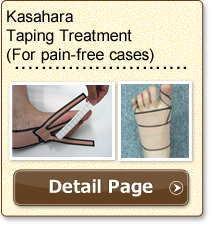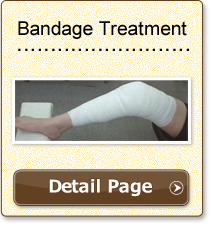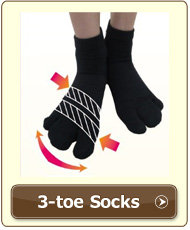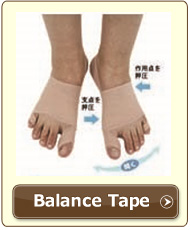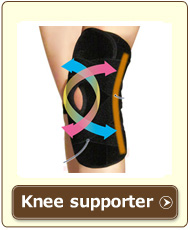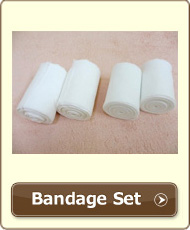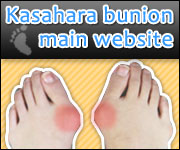Pain on the lower part of shin
(Shin splints)
Condition

With shin splints, there is pain on the lower part of shin (one-third point from the bottom), affecting predominately teenagers who start participating in running-intensive sports (such as soccer). The pain is strongest when starting the activity and after running and decreases as the muscles warm up. It is also often called “Medial Tibial Stress Syndrome” as repetition worsens the condition.
Cause
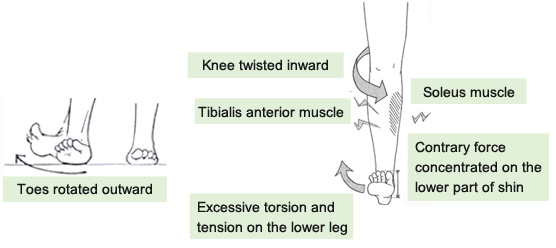
Most people who experience this sports injury have bunions, ungrounded toes or flatfoot and run with toes bent upward, not touching the ground. From this, the shin muscles become fatigued and tight. The load is extremely focused on the adhesion section of the soleus muscle on the inside of shin.
Because the toes rotate outward while the knee is twisted inward when walking, a contrary force is created which is focused on the lower part of shin (one-third point from the bottom), causing inflammation and pain.
This is the consequence of torsion stress accumulated at inner side of shin caused by people who run with toes untouched to the ground firmly.
Treatment
Healing shin splints takes time and requires more than resting or decreasing athletic activity. The key is to stop the “torsion stress” on the injured part by ceasing sports practice for about 3 weeks and to wrap the leg from the ankle to above the knee with bandage.
The Kasahara Taping Treatment (for pain-free cases) prevents the toes from turning outwards and promotes kicking straight. 3-toe socks can be used as a substitute.
It is critical to use the seismic isolation insole (artificial muscle insole) to absorb the shock and torsion waves.
When the pain ceases, the bandage should be wrapped on only shin area and we recommend slowly practicing kicking to learn how to not rotate the toes outward.
Normally, it is about after 5 or 6 weeks that the pain disappears and start practicing again as others.
Related products

